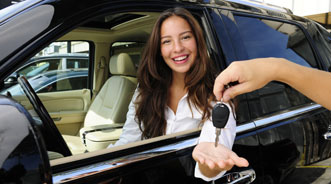What Will Most Heavily Influence Vehicle Sales?

DETROIT –
Audit, tax and advisory firm KPMG recently picked the brains of more than 200 automotive executives to find out which vehicle attributes they believe will have the most influence on consumers’ purchasing decisions in the next five years, as well as to figure out which vehicle categories these industry leaders think will show the most growth.
What did the auto execs have to say?
Well, according to KPMG’s findings, leaders pointed to fuel efficiency most often (91 percent) in rating product attributes as being pivotal to car buyers’ decisions in the next five years.
Safety innovation (82 percent) was next, with styling coming in third at 77 percent. Environmental friendliness was fourth (75 percent).
Some of the heftiest year-over-year gains were seen in safety innovation — which climbed from 71 percent to 82 percent — and vehicle styling (climbing from 61 percent to 77 percent). The perceived importance of ergonomics and comfort also jumped a great deal from a year ago, as did the numbers for telematics/personal assistance services
“Competition is driving the production of higher quality vehicles that incorporate new technologies for better performance and an enhanced driver experience,” said KPMG national automotive industry leader Gary Silberg. “As a result, today’s consumer has come to expect a great deal from their vehicles.
“That innovation is benefiting the consumer across the entire vehicle category spectrum,” he added.
Continuing along, KPMG also delved into findings regarding expected gains in various segments during the next five years.
Apparently, executives most often pointed to hybrid fuel vehicles (84 percent) in listing segments whose global sales will climb. Next up was the newcomer in the pool of options: electric vehicles (77 percent). Third on the list was cars (69 percent), followed by other alternative-fuel vehicles (63 percent), basic or introduction cars (60 percent), and crossovers (56 percent).
SUVs (51 percent) were seventh, luxury vehicles (46 percent) were No. 8 and small pickups were ninth at 45 percent. They were followed by minivans (41 percent) then large pickups, which generated 27 percent of responses.
SUVs, luxury vehicles, large pickups and crossovers showed the greatest year-over-year gains in responses, according to KPMG.
“Executives believe that these categories are here to stay, that consumers are drawn to them, and that success lies in competitively producing the best vehicle within each category,” shared Betsy Meter, national audit leader for the company’s automotive practice.
“What we are also seeing is more optimism across the board for vehicle sales following the economic downturn,” she added.
Hybrids, meanwhile, were off as were basic/introduction cars, which showed more than a 20-perentage-point decrease.
Executives seem to believe that it’s possible that the concept of an entry level vehicle never really panned out the way it was anticipated to, according to Hans Flick, national tax leader for the company’s auto sector.
“It may just be that even emerging market customers new to the car market look for all the features and comforts of a standard car,” Flick suggested.
Subscribe to receive our daily e-newsletter and never miss the latest industry news, trends, and insights across the used-car and remarketing space.


